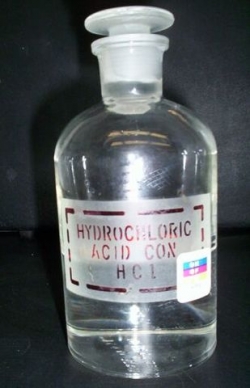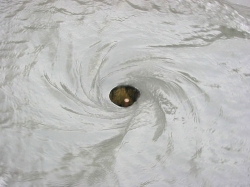We have now reached the end of a long, straight tunnel on our journey to the center of you. We are at the top of a large cave. It bubbles and gurgles and does not smell very good, to be honest. Welcome to your stomach! You see it everyday. You pat it from the outside. You hear it gurgle when you eat something. Still, there are things waiting in here you probably do not know about yet.
Your stomach is shaped like a "J" It's about ten inches long, just short of a ruler. It can hold about a quart of food and liquid, or two bowls of cereal. It has three jobs:
1. To store your food
2. To break that food down into a liquid
3. To push that liquid through the rest of you
Imagine you have a brand new box of LEGOs. You want to use all those blocks to build something new. This is just like the way your body wants to turn your food into energy. Like the LEGOs, you need to break the package open! How does that happen?
In the bottom of the "J" shape, you will see a lot of stuff that looks a little like water. It's green and yellow and it bubbles. Sound gross? Good thing we keep it on the inside, right? This stuff is
acid, a liquid that breaks your food down into slime. We need to break food down so it can slide through the rest of you. It pours in from your stomach cells the second you start chewing because they know food is on the way. Acid also kills any bad bacteria that happen to be on your food.

Hydrochloric Acid; you find it in your stomach but you can't drink it.
Your food is held together by bonds. Think of these as a bunch of rubber bands holding together sticks. Acid goes in and pulls these bonds apart, kind of like pulling LEGO blocks apart. That way the pieces of food can go down easier. Oh, and just in case that gave you any ideas, please do not swallow any LEGOs.
Acid is not the only thing that breaks down your food into smaller parts. Your stomach may seem like a big sack, but it's made of muscle that can stretch and squeeze. To
churn means to mix around the things inside. Your stomach squeezes its walls to mix and churn your food. This helps break the food into smaller pieces. It's kind of like a clothes washer, moving your clothes around to get them really clean -- just don't eat any socks. They will not come out clean.

Don't throw your breakfast in here. Eat it instead.
LGEPR, CC BY 2.0 , via Wikimedia Commons
Now that your food is mixed around and free of bad stuff, it is starting to look a lot different than it did when it came in. It looks a lot runnier, like an egg yolk. It does not look like something you would want to eat. This is a good thing. Otherwise, you might have big pieces of food blocking up your pipes!
Chyme is the creamy stuff your stomach turns your food into. Yes, it looks like throw up. Now the parts of your food are now small enough that your body can suck out the good parts.
There's a hole in the bottom of your stomach. It's like a drain but this drain can open and close when it wants. Your
pyloric sphincter is a ring of muscle that only lets the food leave your stomach when it's ready. It knows when food has been broken down enough to move on. Without it, your food would go right through you and you might not get as much of the good stuff that you need. This drain only swallows your food when it's really gross. Luckily for you, the drain has bad taste.

When it's all ready, it's time for down the drain.
It only takes about forty minutes for your stomach to turn food into slime. The next part is very slow though. So we will leave your food right where it is. Your stomach can stretch, getting bigger and bigger so it can hold your food until it's ready to move on. Lay your hand right below your heart and feel as your food gets churned and broken down. It will feel like little earthquakes coming from the center of you.
References:
Kids Health. "Your Digestive System: See You In the
Stomach." Kids Health, 2012. <http://kidshealth.org/kid/htbw/digestive_system.html#a_See_You_in_the_Stomach>
BBC Science: Human Body & Mind. "Organ: Stomach."
BBC, 2014.
<http://www.bbc.co.uk/science/humanbody/body/factfiles/stomach/stomach.shtml>